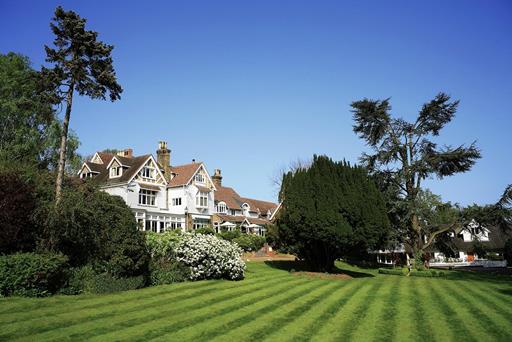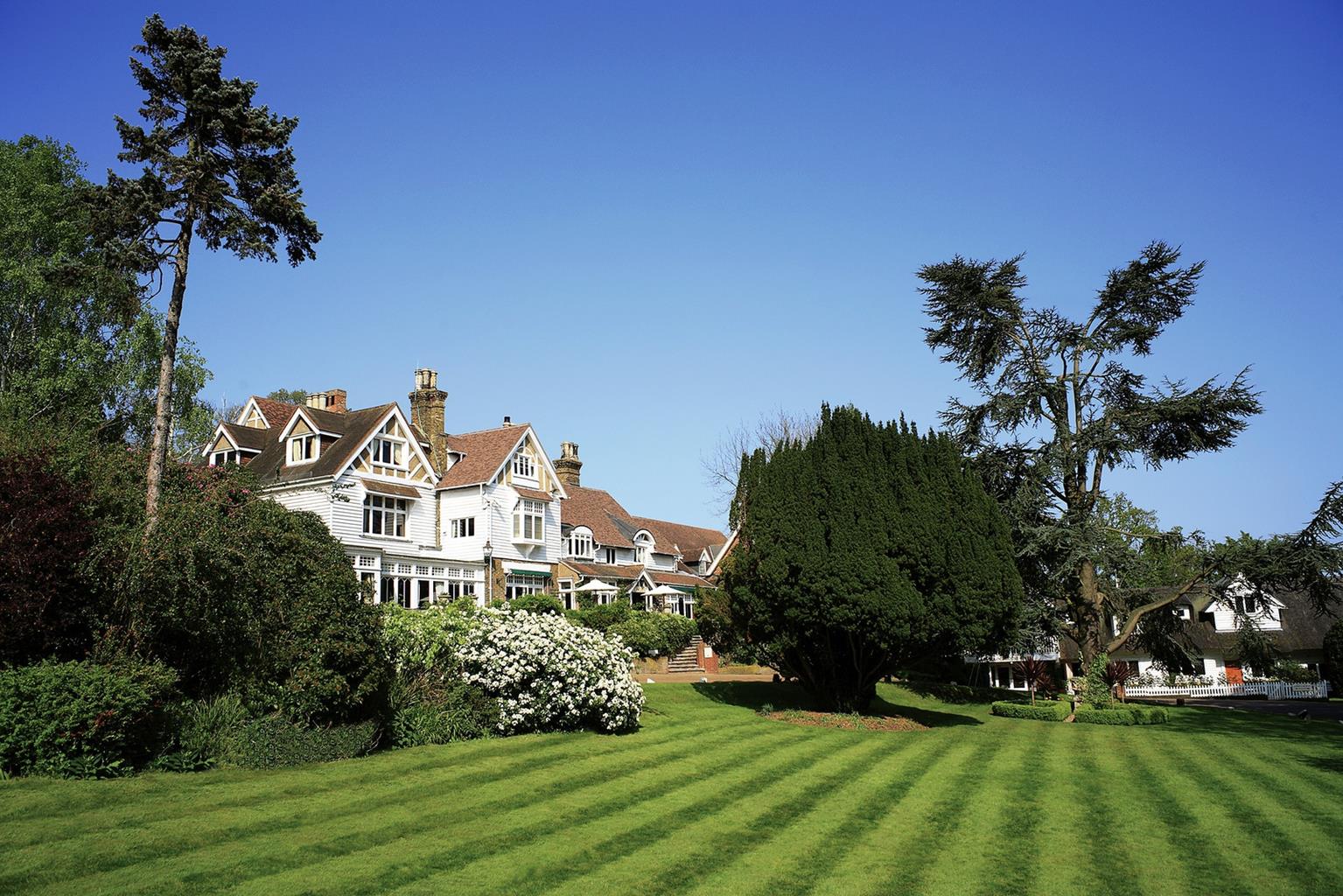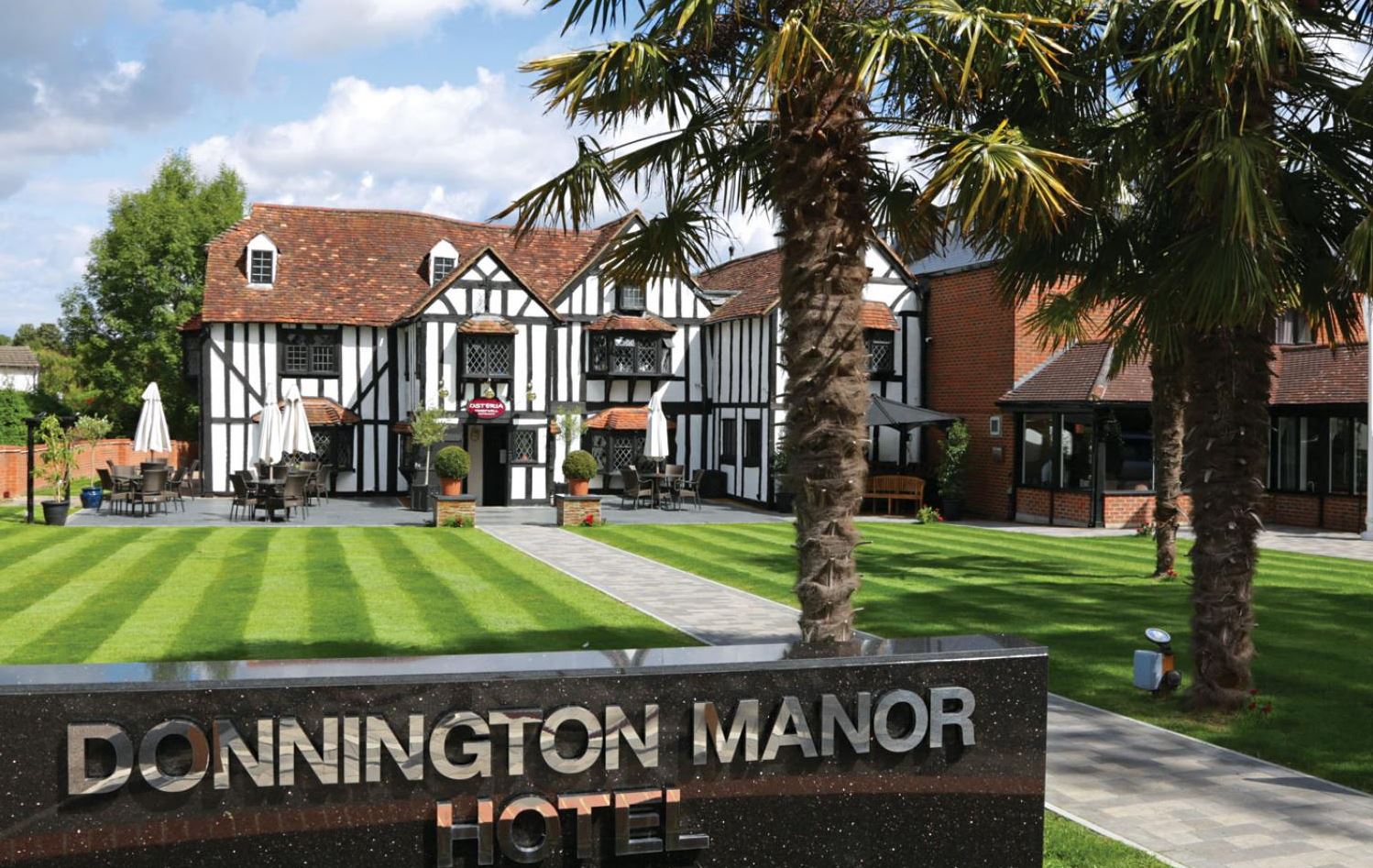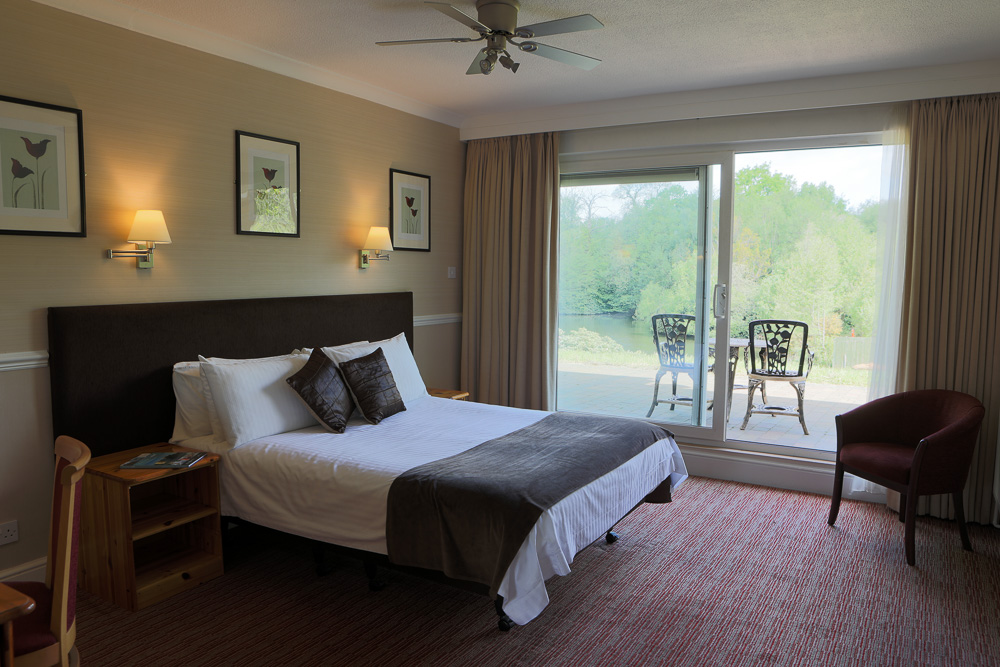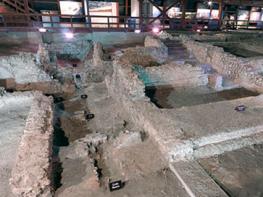Set in nine acres of mature woodland, Rowhill Grange enjoys a tranquil setting, yet is still…
A roam around Eynsford

5 miles (8kms)
About the walk
This walk begins in the pretty village of Eynsford, which sits in the fertile Darent Valley just a few miles from London. With Saxon origins, a 17th-century bridge and a cluster of Tudor and Georgian buildings, the village oozes history. Yet it’s a relative newcomer compared to the place you pass near the end of your stroll.
Lullingstone Roman villa was built around AD 100, 60 years after the Emperor Claudius started his conquest of Britain in AD 43. Set beside the river, on the site of an Iron Age farmstead, the villa was occupied for the next 500 years forming the heart of a bustling estate. It continued to be inhabited for a short time after the fall of the Roman Empire but was eventually abandoned, perhaps after a fire. It then slept, largely forgotten, for centuries until archaeologists excavated the site in 1949 and discovered this historical treasure – a superbly preserved villa that evolved from a relatively modest property to a lavish home reflecting the height of Roman luxury. Visit the villa today and you can see the relics of the bath house, the sophisticated system of under-floor heating, delicate wall-paintings and some exquisite mosaic flooring. There are finds too, such as jewellery and tiles, including one imprinted with the paw print of a small dog. The villa is of particular significance as it has been found to contain some of the earliest evidence of Christianity in Britain. Fragments of plaster were pieced together to reveal early Christian paintings that decorated the walls of a church which had been built into the villa. Beneath the little chapel was a cult room, dedicated to the worship of Roman deities.
Not far from the Roman villa is Lullingstone Castle, a Tudor manor house with an 18th-century facade and a grand gateway. The castle was built in 1497 and has hosted a number of royal visitors over the years including Henry VIII and Queen Anne. It has been home to the Hart Dyke family ever since it was built and the current heir, the modern day plant hunter Tom Hart Dyke, has created a stunning World Garden in its grounds. He conceived the idea when he was kidnapped and held captive for nine months in the Colombian jungle in 2000. The garden is now home to rare plants including an Australian Dinosaur Tree (Wollemi Pine), one of the world’s oldest horticultural species.
Walk directions
From the car park on Eynsford’s main street, turn right down Riverside, opposite the church. Cross the bridge by the ford, an important crossing point on the Darent since Roman times. Pass The Plough Inn, then Sparepenny Lane. The name dates back to the days when tolls were required on turnpike roads. Sparepenny Lane would have been cheaper than the main turnpike. At the last house on the right, bear right into a field to follow the Darent Valley Path. Cut across this field to cross a stile at the top, then walk – carefully – across the railway line.
Cross another stile then cross the next field to go through a gap in the fence. Cross the lane and follow the path across the next field. At the post at the top, keep to the left of the hedge, then turn right at the field-edge, soon to bear left at the marker post through trees into another field. Your path continues across the top of the field, dips slightly, then goes between trees, with part of a golf course on your left. Where the path forks, keep right with the bridleway through the edge of trees and continue along the right-hand edge of a field. Turn left at a fork, go back into the woods and walk ahead, keeping the golf course on your left. Reach a broad track, cross and go a few paces left, then continue ahead, keeping the fairways to either side. Soon reach a tarmac track, turn right and walk towards the clubhouse.
At the fingerpost turn left and bear left beside a green, then go down into the woods, soon to cross a fairway (watching out for golf balls). Walk ahead until you come to a metal fence with a ladder stile, where you turn left following signs to the visitor centre.
Go right at the fork and follow the track through the woods, guided by white- and black-banded posts. Pass beside a gate, fork right at the blue-banded post to reach another gate. Head downhill with the fence to your right to the visitor centre. There are lovely views of Eynsford Viaduct, built in the 19th century.
Your route now goes past the visitor centre, then bears left just before the road, along the Darent Valley Path. Your walk takes on a restful quality along the banks of the Darent. Keep walking by the river until you reach the entrance of Lullingstone Castle.
Walk past the gateway and along the road to Lullingstone Roman Villa. Keep the villa on your left and walk straight ahead, past signs for a bird of prey centre, and underneath the viaduct. Walk close to the river again and into Eynsford.
Additional information
Woodland, riverside and field paths, mostly firm underfoot, several stiles
River valley and rolling parkland
Great, several sections where they can run free; popular local dog walking route
OS Explorers 147 Sevenoaks & Tonbridge, 162 Greenwich and Gravesend
Car park (free) in Eynsford
Lullingstone Park Visitor Centre
WALKING IN SAFETY
Read our tips to look after yourself and the environment when following this walk.
Find out more
Also in the area
About the area
Discover Kent
The White Cliffs of Dover are an English icon – the epitome of our island heritage and sense of nationhood. They also mark the point where the Kent Downs AONB, that great arc of chalk downland stretching from the Surrey Hills and sometimes known as ‘the Garden of England’, finally reaches the sea. This is a well-ordered and settled landscape, where chalk and greensand escarpments look down into the wooded Weald to the south.
Many historic parklands, including Knole Park and Sir Winston Churchill’s red-brick former home at Chartwell, are also worth visiting. Attractive settlements such as Charing, site of Archbishop Cranmer’s Tudor palace, and Chilham, with its magnificent half-timbered buildings and 17th-century castle built on a Norman site, can be found on the Pilgrim’s Way, the traditional route for Canterbury-bound pilgrims in the Middle Ages.
In the nature reserves, such as the traditionally coppiced woodlands of Denge Wood and Earley Wood, and the ancient fine chalk woodland of Yockletts Bank high on the North Downs near Ashford, it is still possible to experience the atmosphere of wilderness that must have been felt by the earliest travellers along this ancient ridgeway.
Nearby stays
Restaurants and Pubs
Nearby experiences
Recommended things to do
Why choose Rated Trips?
Your trusted guide to rated places across the UK
The best coverage
Discover more than 15,000 professionally rated places to stay, eat and visit from across the UK and Ireland.
Quality assured
Choose a place to stay safe in the knowledge that it has been expertly assessed by trained assessors.
Plan your next trip
Search by location or the type of place you're visiting to find your next ideal holiday experience.
Travel inspiration
Read our articles, city guides and recommended things to do for inspiration. We're here to help you explore the UK.


